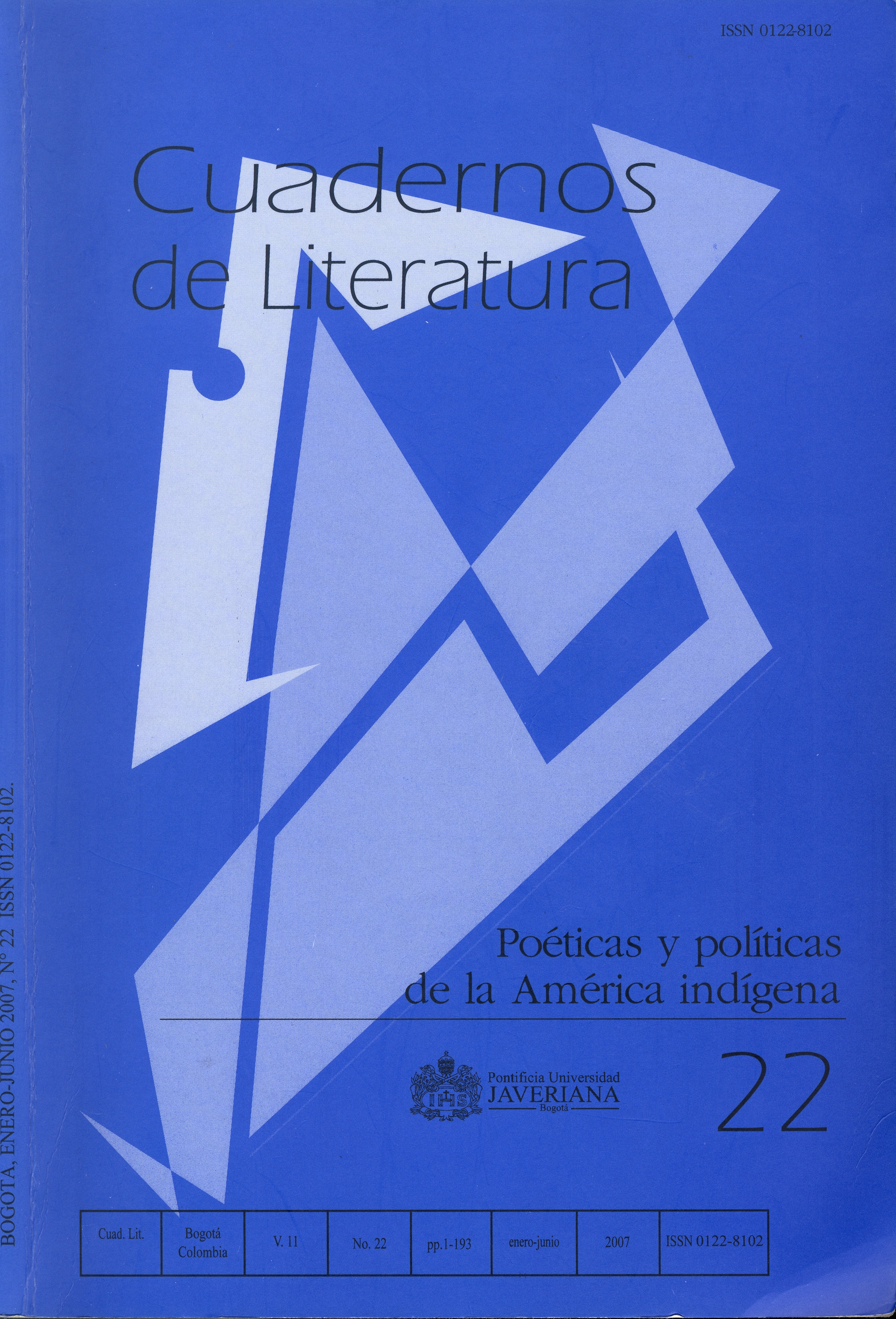Abstract
Este artículo hace un estudio de dos leyendas que aparecen en las crónicas del Nuevo Reino de Granada que cuentan el desmantelamiento de la sociedad muisca en el siglo XVI. La primera es la del mito de El Dorado y la laguna de Guatavita, que se encuentra en la obra Noticias historiales del Nuevo Reino de Granada (1627) de Fray Pedro Simón. La otra es la historia del jeque Popón, que aparece tanto en El carnero (1636, 1859), de Juan Rodríguez Freyle, como en la crónica de Simón. El chamán muisca es víctima del engaño de un eclesiástico que se aprovecha de sus funciones para robar los tesoros sagrados encomendados a los jeques. Ambos textos ilustran el contraste entre el oro visto por la sociedad nativa como símbolo sagrado de la fertilidad y el oro visto como un botín por los conquistadores.Cuadernos de Literatura is registered under a Creative Commons Attribution 4.0 International Public License. Thus, this work may be reproduced, distributed, and publicly shared in digital format, as long as the names of the authors and Pontificia Universidad Javeriana are acknowledged. Others are allowed to quote, adapt, transform, auto-archive, republish, and create based on this material, for any purpose (even commercial ones), provided the authorship is duly acknowledged, a link to the original work is provided, and it is specified if changes have been made. Pontificia Universidad Javeriana does not hold the rights of published works and the authors are solely responsible for the contents of their works; they keep the moral, intellectual, privacy, and publicity rights.
Approving the intervention of the work (review, copy-editing, translation, layout) and the following outreach, are granted through an use license and not through an assignment of rights. This means the journal and Pontificia Universidad Javeriana cannot be held responsible for any ethical malpractice by the authors. As a consequence of the protection granted by the use license, the journal is not required to publish recantations or modify information already published, unless the errata stems from the editorial management process. Publishing contents in this journal does not generate royalties for contributors.


